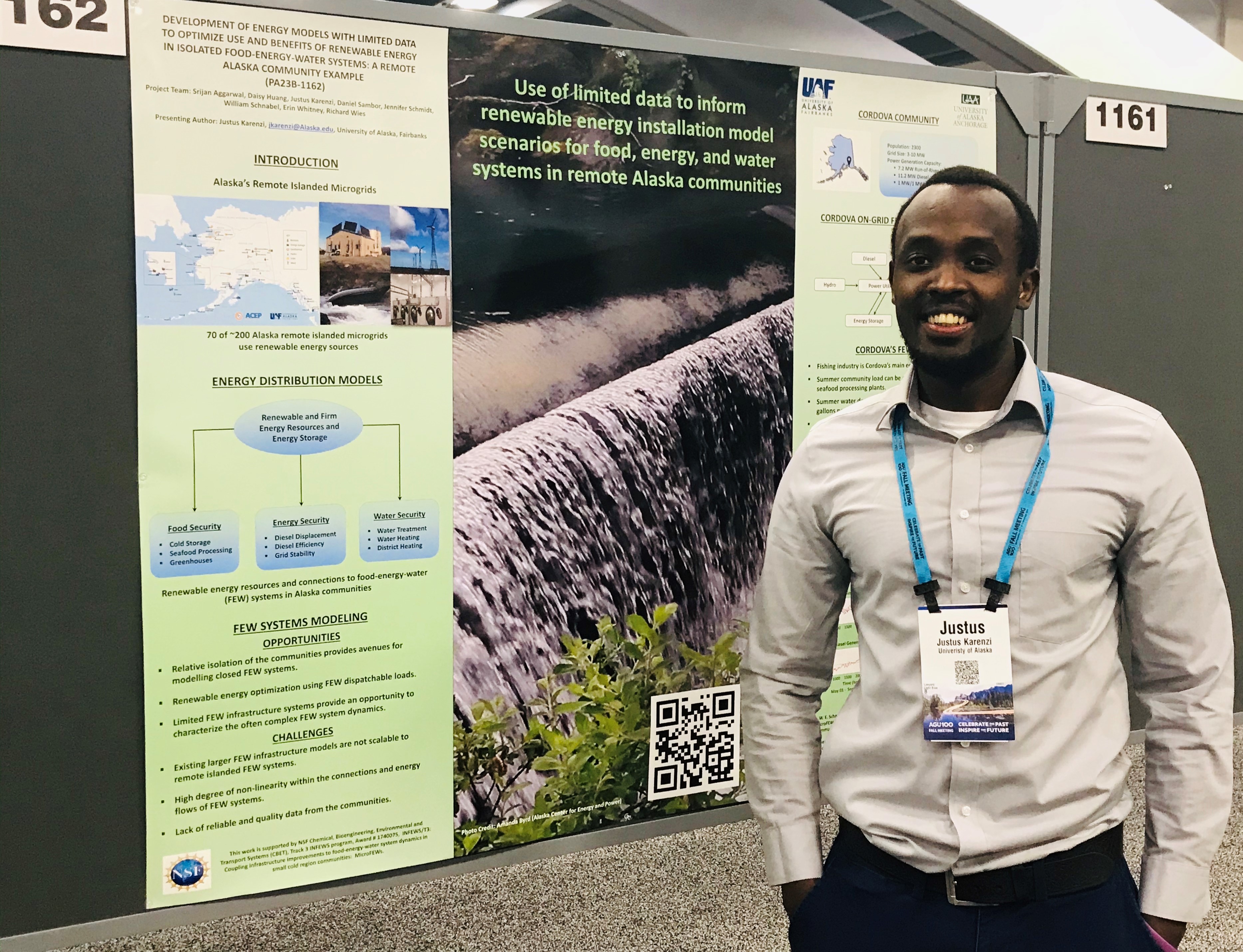Eye-Grabbing Poster Uses New Features, Fewer Words

Graduate student Justus Karenzi, a member of the MicroFEWs team, recently participated in a poster presentation session at the 2019 American Geophysical Union conference. His poster, on the use of limited data to inform the impacts of renewable energy on food, energy and water security, stood out from the hundreds of others in the room.
Karenzi’s poster used an attention-grabbing format that boiled his presentation down to two parts:
1) The main research findings stated in plain English in text that can be read from a distance, with a few charts, methods and results.
2) A QR code that viewers can scan to go straight to MicroFEWs website and learn more about the project.
The new format responded to a YouTube video suggesting that information-dense scientific posters do not get important research information across to audiences.
The AGU, which took place in December in San Francisco, California, brought together over 28,000 participants in geoscience-related research areas.
The MicroFEWs project looks at the impacts of renewable energy integration on food, energy and water security in rural Alaska communities. This is done by developing energy distribution models with limited data to optimize the use and benefits of renewable energy upon the FEW system infrastructures in the communities.
Karenzi’s poster presented Cordova, a community in Southcentral Alaska, as a case study. Cordova has a robust fishing industry that can drive electricity demand up to 10 megawatts during the summer. The goal was to see how one additional 3-MW hydro turbine and energy storage system could not only displace diesel fuel consumption but also enable the community to make the most of its hydropower capacity.
Justus Karenzi stands by his poster which gained a lot of attention at the AGU conference. Photo courtesy of Justus Karenzi.
|
Justus Karenzi stands by his poster which gained a lot of attention at the AGU conference. Photo courtesy of Justus Karenzi. |
Graduate student Justus Karenzi, a member of the MicroFEWs team, recently participated in a poster presentation session at the 2019 American Geophysical Union conference. His poster, on the use of limited data to inform the impacts of renewable energy on food, energy and water security, stood out from the hundreds of others in the room.
Karenzi’s poster used an attention-grabbing format that boiled his presentation down to two parts:
1) The main research findings stated in plain English in text that can be read from a distance, with a few charts, methods and results.
2) A QR code that viewers can scan to go straight to MicroFEWs website and learn more about the project.
The new format responded to a YouTube video suggesting that information-dense scientific posters do not get important research information across to audiences.
The AGU, which took place in December in San Francisco, California, brought together over 28,000 participants in geoscience-related research areas.
The MicroFEWs project looks at the impacts of renewable energy integration on food, energy and water security in rural Alaska communities. This is done by developing energy distribution models with limited data to optimize the use and benefits of renewable energy upon the FEW system infrastructures in the communities.
Karenzi’s poster presented Cordova, a community in Southcentral Alaska, as a case study. Cordova has a robust fishing industry that can drive electricity demand up to 10 megawatts during the summer. The goal was to see how one additional 3-MW hydro turbine and energy storage system could not only displace diesel fuel consumption but also enable the community to make the most of its hydropower capacity.


